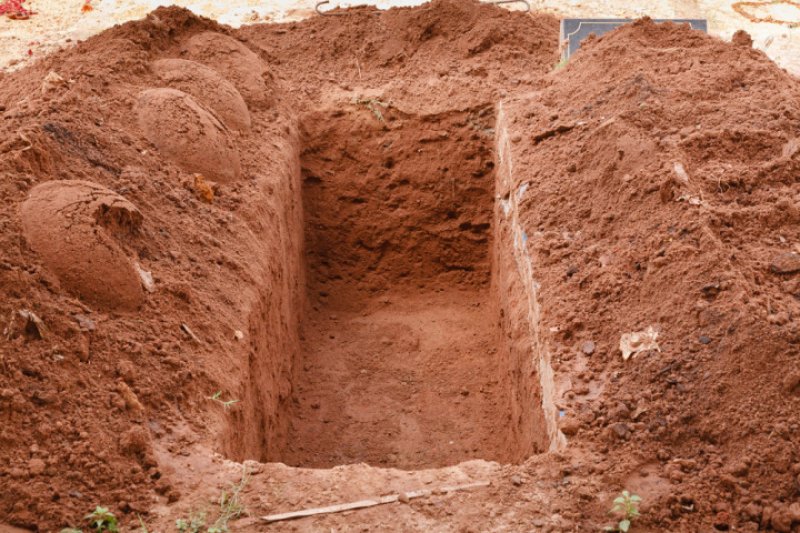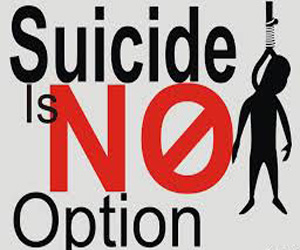Suicide perspectives of the dominant tribes in Northern Ghana
By Administrator
Content warning: Post contains detailed descriptions of suicide methods and shaming.
In my previous posts, I’ve discussed how witchcraft beliefs exist in Ghana and how the accusations work. In this post, I will discuss a different but related topic: how suicide is viewed and the reaction to it in these communities. Like witchcraft accusations, the response to suicide is related to supernatural beliefs and to the collectivist culture where individual actions are believed to affect the whole community’s well-being, which is reinforced by community rituals to understand and appease local gods. Like with a lot of the work we are doing with witchcraft accusations, understanding the reasons behind why people believe and do the things they do is an important part of building relationships. Without understanding and relationships, our work is almost impossible.
There are several tribes and clans in the Northern Region. The most dominant among them is the Mole Dagbon clan that comprises the Dagomba, Mumprusi, and Nanumba tribes. Together they call themselves Dagbamba because the tindamba (landowners) of the ancient Dagbon who were their ancestors called themselves Dagbanba. Suicide is against the ethics and values of the above-mentioned tribes. Suicide is considered as one of the bad or unrespectable deaths in the in these traditions. Anything outside of natural causes can be seen as a bad death.
Burial Processes
 When a person dies a natural death, the body is covered with cloth and elderly people sit with it for a few hours. The time can vary based upon when the people are ready for the funeral. Then the corpse is bathed by a family member and wrapped with a white cloth and sent for burial. Prayers are recited before the burial. The grave is an oblong shape with a hidden compartment. This is so that dirt is not thrown directly upon the body and to prevent the soil from sinking into the body as it decays. This also prevents the smell of the decaying body from rising from the grave. Every grave is dug to a depth of six feet and the corpse is placed in the grave lying on the right and facing east.
When a person dies a natural death, the body is covered with cloth and elderly people sit with it for a few hours. The time can vary based upon when the people are ready for the funeral. Then the corpse is bathed by a family member and wrapped with a white cloth and sent for burial. Prayers are recited before the burial. The grave is an oblong shape with a hidden compartment. This is so that dirt is not thrown directly upon the body and to prevent the soil from sinking into the body as it decays. This also prevents the smell of the decaying body from rising from the grave. Every grave is dug to a depth of six feet and the corpse is placed in the grave lying on the right and facing east.
When a person dies by suicide the process is very different. People do not touch the body of the person because they believe that if they do they might also end up dying through suicide. Immediately after the suicide occurs, there are grave diggers known as kasigreba who are responsible for burial. This is their only duty. These people are believed to possess supernatural powers that can be used against any evil spirits or spiritual dangers. This makes them eligible to hold the corpse with their bare hands. They are the only ones who are allowed to touch the body in any fashion.
The body is not removed from where the incident happened to another place for burial. If the death is by hanging, the grave is dug directly under where the act is committed. An estimated body size of the corpse is determined while a person is still hanging and then the grave is dug. After that, the rope is cut off. The body falls into the grave untouched and the body is covered with soil.
When the death is by other means, the grave diggers dig the grave directly beside where the corpse is resting. Strong sticks are used to push the body into the grave.
The exception to burial at the site of the death is if the suicide is committed at a place where the body need to be moved. (e.g. near a body of water that people drink). Then the kasigreba move the body to a different location for burial. The gravediggers sometimes do not use their hands to move the body, but rather a mat is put down and strong sticks are used to push the body onto the mat. They only touch the body when they absolutely have to. Several of the grave diggers hold to the end or corners of the mat which is dragged to the grave. This is also how the corpse of an Ebola victim would be treated in Ghana.
A suicide death by drowning is treated differently from the others. When a person drowns in a river the person is removed from the water. The corpse is placed by the side of the river. In Dagbanba tradition there is nothing considered like a mortuary. Suicides are dealt with directly at the scene in which the death occurs.
Community Rituals
When a person dies a natural death, the elder of the land uses a white cloth to wrap the dead body and sprinkle some perfume on the body to prevent any sort of smell. This cannot be said of the suicide death.
Immediately following the news of a suicide, the chief of the land sends delegates to the community shrine to find out the spiritual cause of the death. Sometimes delegations are sent to very far places in different communities to get the views of different shrines on the cause. It is believed that when the gods of the land are angry they might not want to reveal any information. The people of the land strongly believe that the gods are the ones that bring them blessings, good harvest, and rainfall. For that reason, they dedicate their lives to be protected from sickness, accidents, and curses by the gods. When one commits suicide the elders of the land go through several consultations with the gods to ascertain the actual cause of the death. Soothsayers tell the community to buy fowls or animals (goats, sheep, and cows) for sacrifice to cool the temper of the gods because it is an abomination.
The animals are then slaughtered to pacify the gods of the land. This prevents the gods casting a spell onto the land and also prevents future suicides. When the gods demand any kind of animal for the sacrifice, elders quickly makes it available. During the ritual sacrifice, the shrine priest communicates with the gods. Afterwards, he cuts the throat of the animal to be used for the sacrifice. He sometimes sprinkles the blood on the god's “stones in nature.” In the shrine, there are stones that, depending on interpretation, represent the gods of the community or are themselves the gods. It is believed that when the blood is sprinkled on the stones the gods will drink it. The dead body of the person who commits the suicide is left resting at the same spot until all the consultations and sacrifices are made.
Modernization and Change
I have spoken to traditionalists to ascertain their understandings of the causes of the so-called flaw in the land i.e. suicide. According to them, suicide might have been the work of the devil or a curse. The causes of suicide in the land include witchcraft, barrenness, when one goes contrary to the rules of the gods, poverty, if one murders a person, fornication, and adultery. In no case is a suicide ever viewed as simply the act of the individual. It is always the result of an outside force.
 Traditional men of these tribes have the concept kavuni. This term is used by men in the land to mean they will never allow anything to influence their way of life. Despite that, with modernization traditional beliefs in the communities are changing. That includes reactions to suicides. Modern hospitals and national laws have changed the process a body must go through before burial. In the olden days, the people didn’t know what a mortuary was, but in the 20th century, mortuaries were introduced in the hospitals. Now the law says that when a person commits suicide no one can touch the body until a medical autopsy is performed on it. Now, in many cases, the community cannot bury a body on the site of the death.
Traditional men of these tribes have the concept kavuni. This term is used by men in the land to mean they will never allow anything to influence their way of life. Despite that, with modernization traditional beliefs in the communities are changing. That includes reactions to suicides. Modern hospitals and national laws have changed the process a body must go through before burial. In the olden days, the people didn’t know what a mortuary was, but in the 20th century, mortuaries were introduced in the hospitals. Now the law says that when a person commits suicide no one can touch the body until a medical autopsy is performed on it. Now, in many cases, the community cannot bury a body on the site of the death.
One of the ways we are attempting to end witchcraft accusations is to increase medical literacy. If people in these communities better understand illness, especially common illnesses around here like malaria, they will be less likely to blame a malaria death on innocent women. Similarly, as modern medicine and laws related to suicide become more common in this area, perhaps suicide will lose its stigma. People at risk for suicide can receive mental healthcare rather than shame.
